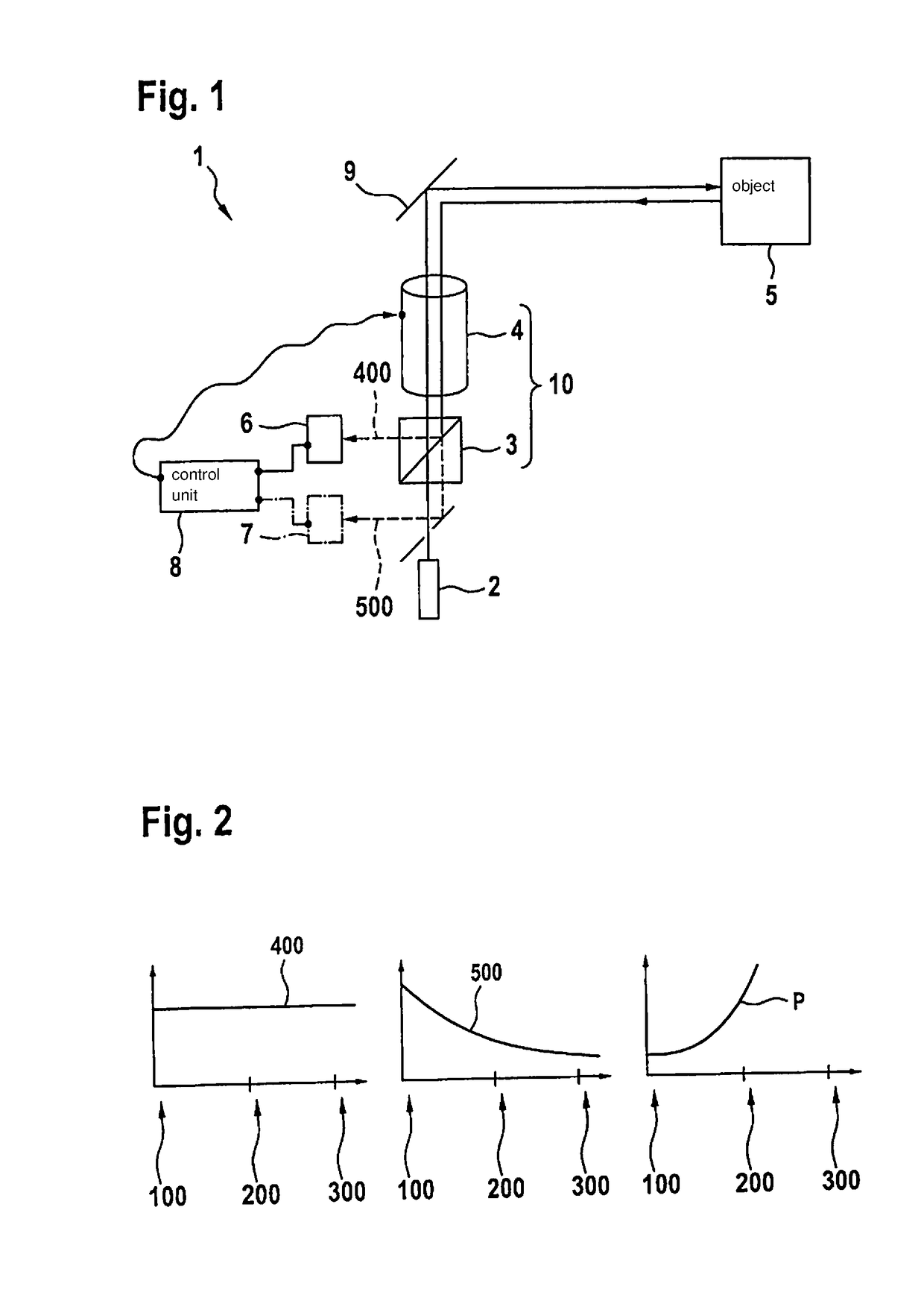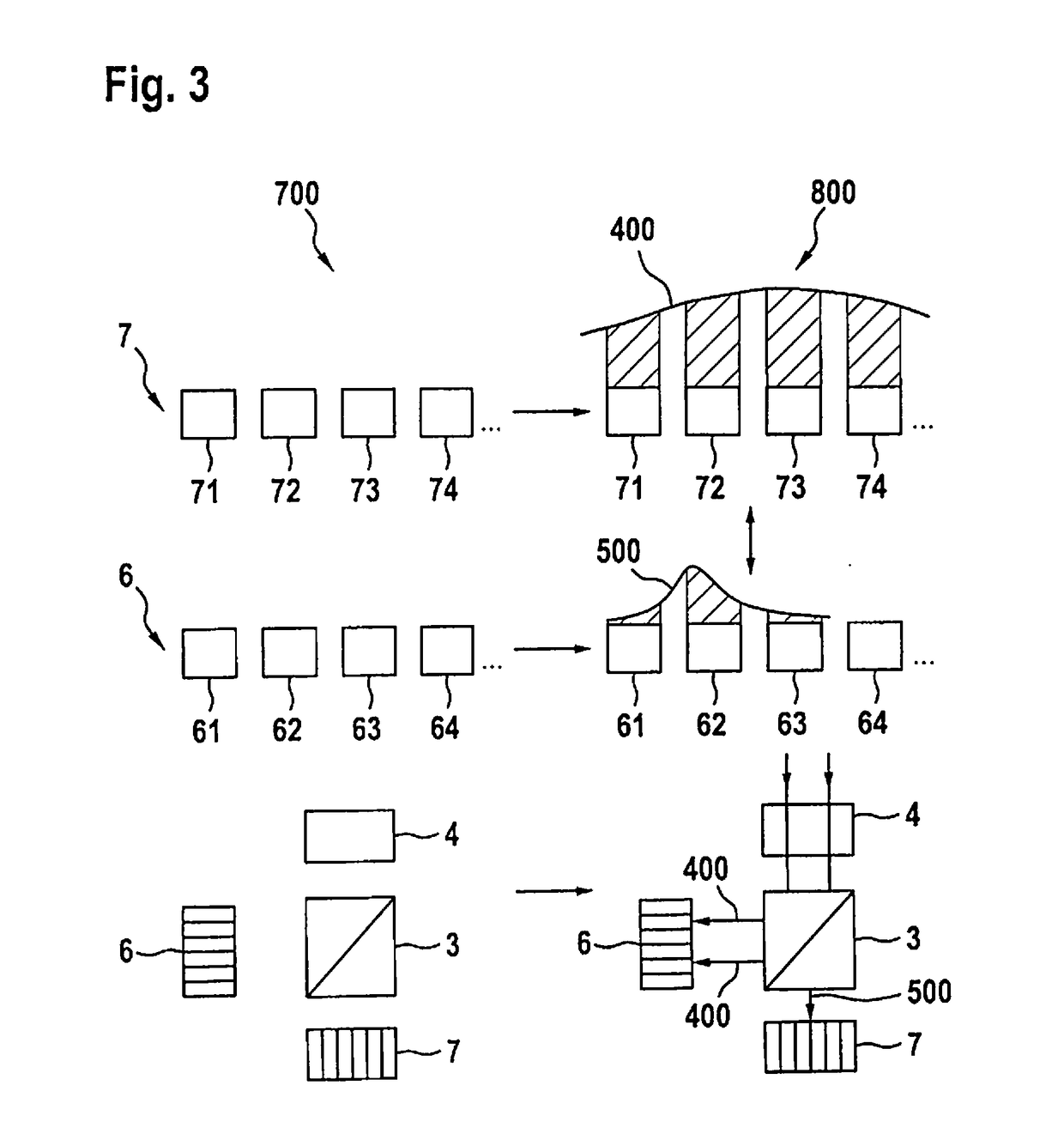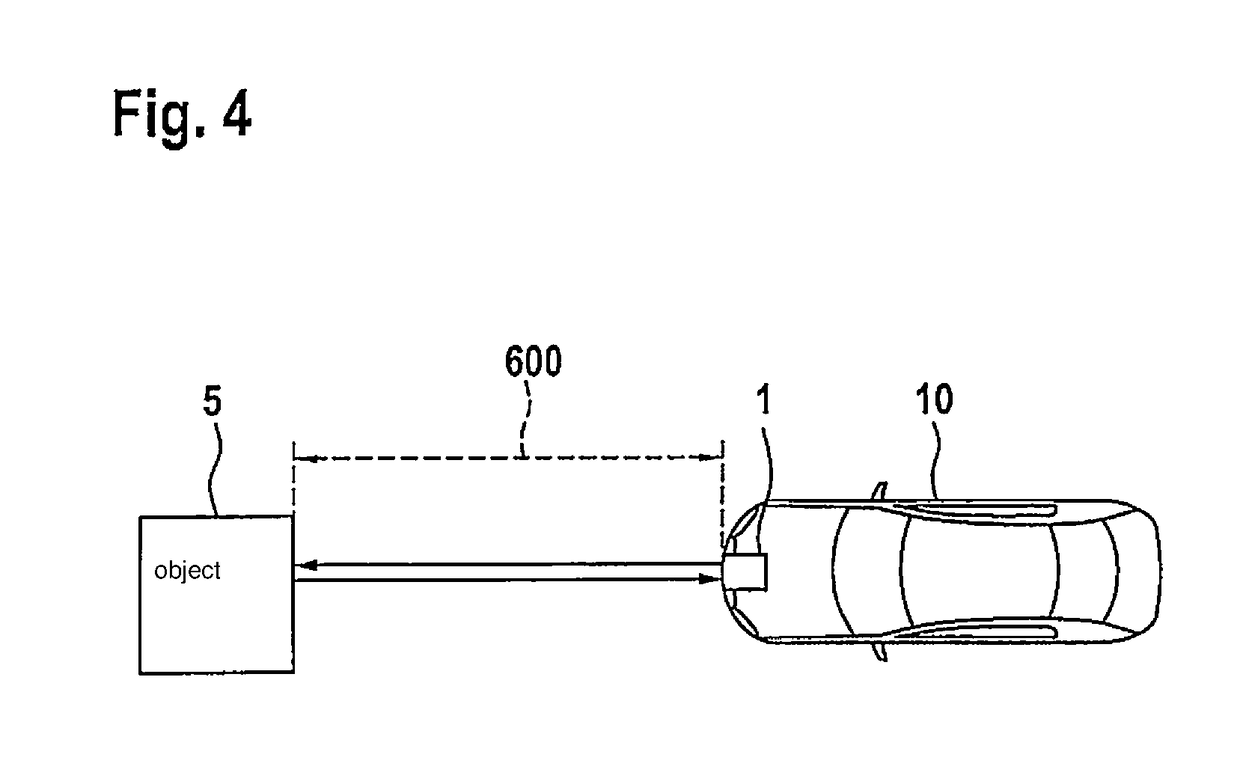Lidar system
a lidar system and detector technology, applied in the field of lidar systems, can solve the problems of excessive light being cast back onto the detector, the lidar system may be blinded, and the risk of optical crosstalk between individual pixels of the detector
- Summary
- Abstract
- Description
- Claims
- Application Information
AI Technical Summary
Benefits of technology
Problems solved by technology
Method used
Image
Examples
Embodiment Construction
[0024]FIG. 1 shows schematically a lidar system according to an exemplary embodiment of the present invention. Lidar system 1 comprises a laser light source 2 and a light modulator unit 10. In the exemplary embodiment shown, the light modulator unit 10 is implemented by a beam splitter 3 and a Pockels cell 4. Laser light source 2 is used to emit a laser light. The laser light passes through the components of beam splitter 3 and Pockels cell 4, as a result of which the laser light obtains a predefined polarization. Subsequently, the laser light passes through a deflecting device 9 and is deflected by deflecting device 9. Deflecting device 9 is in particular designed to be movable and allows for the laser light to be deflected onto different areas in a surroundings of lidar system 1.
[0025]The laser light emitted by lidar system 1 is reflected by an object 5 in the surroundings of lidar system 1. Lidar system 1 is developed to be in particular coaxial, as a result of which the reflecte...
PUM
 Login to View More
Login to View More Abstract
Description
Claims
Application Information
 Login to View More
Login to View More - R&D
- Intellectual Property
- Life Sciences
- Materials
- Tech Scout
- Unparalleled Data Quality
- Higher Quality Content
- 60% Fewer Hallucinations
Browse by: Latest US Patents, China's latest patents, Technical Efficacy Thesaurus, Application Domain, Technology Topic, Popular Technical Reports.
© 2025 PatSnap. All rights reserved.Legal|Privacy policy|Modern Slavery Act Transparency Statement|Sitemap|About US| Contact US: help@patsnap.com



